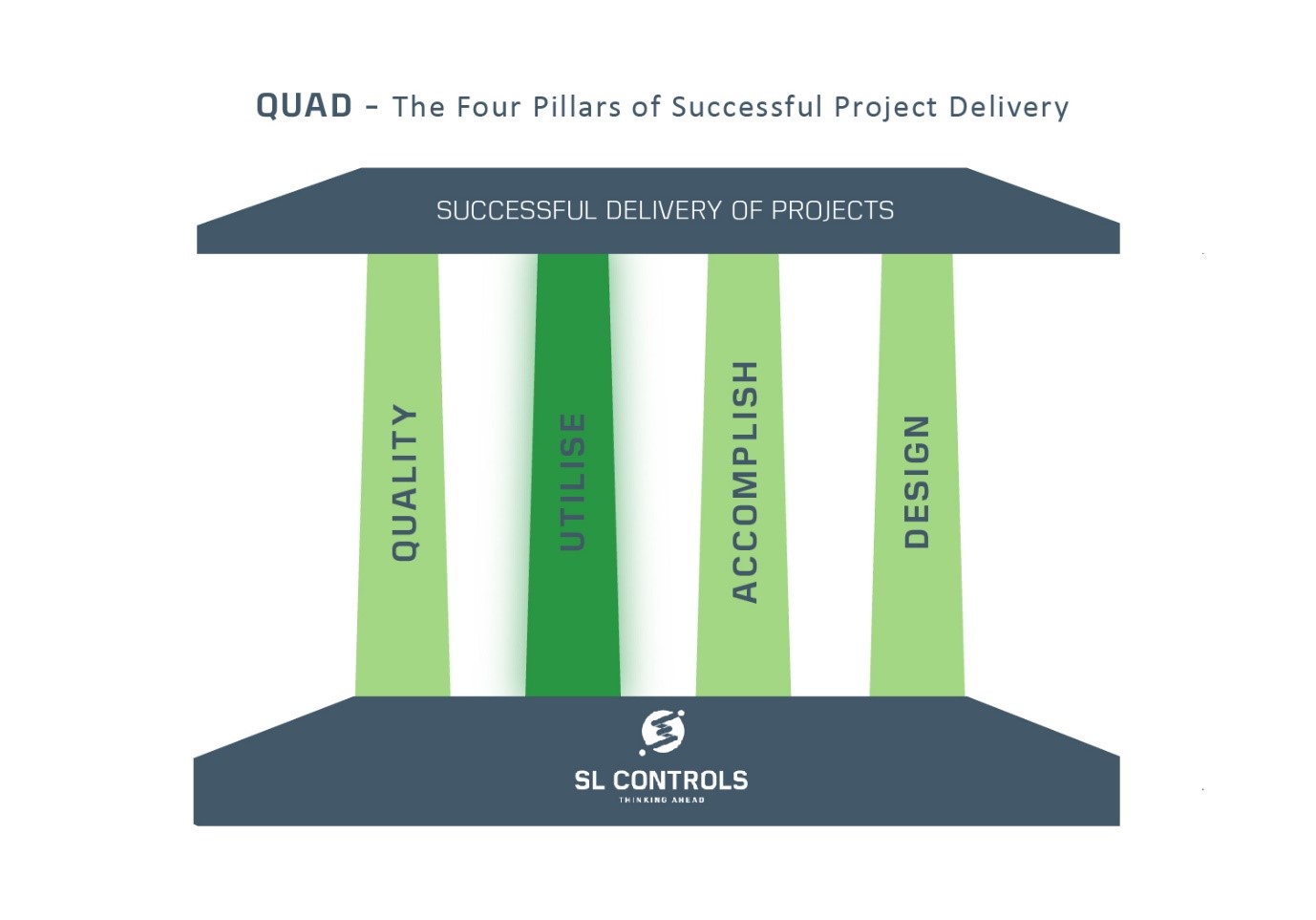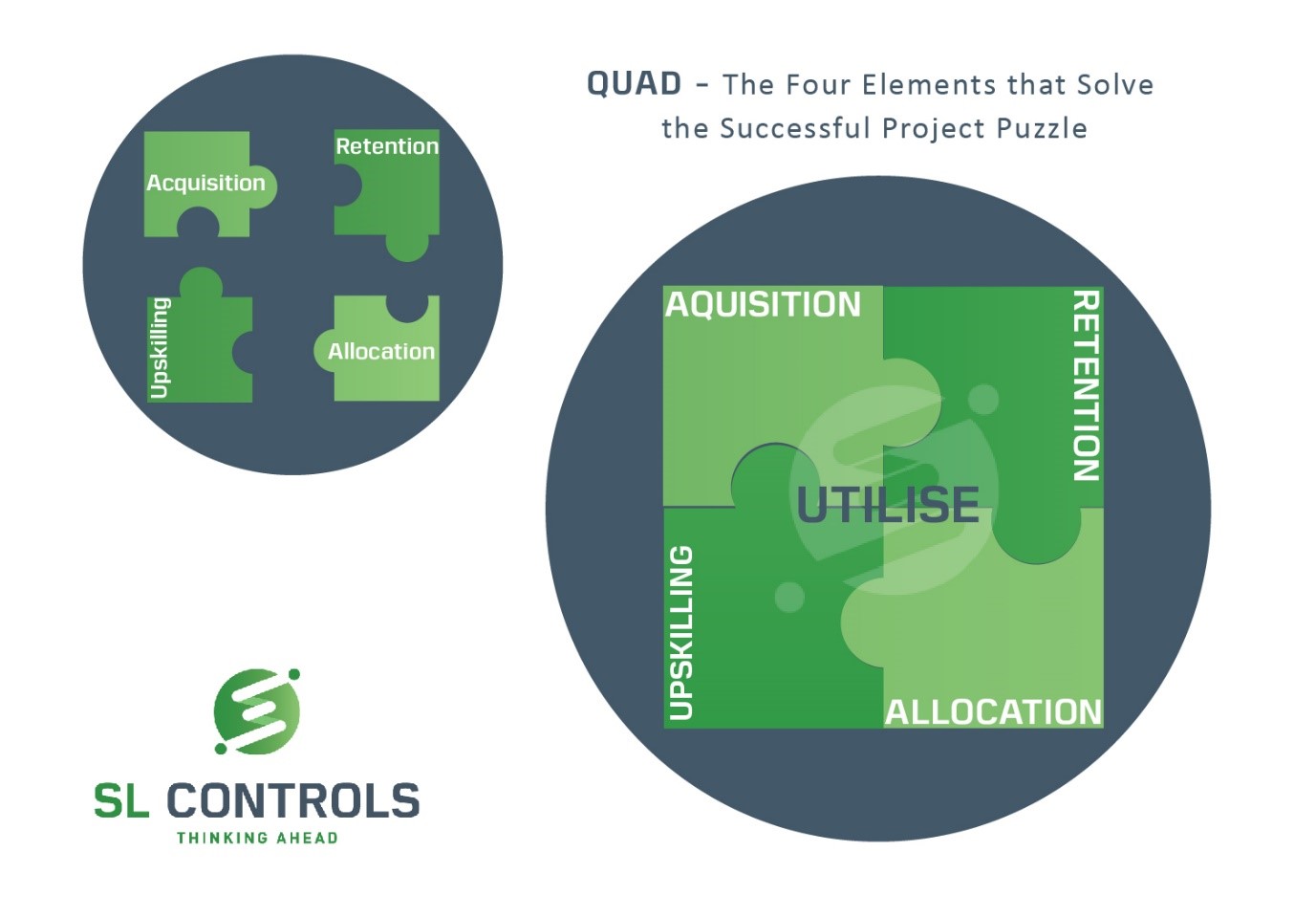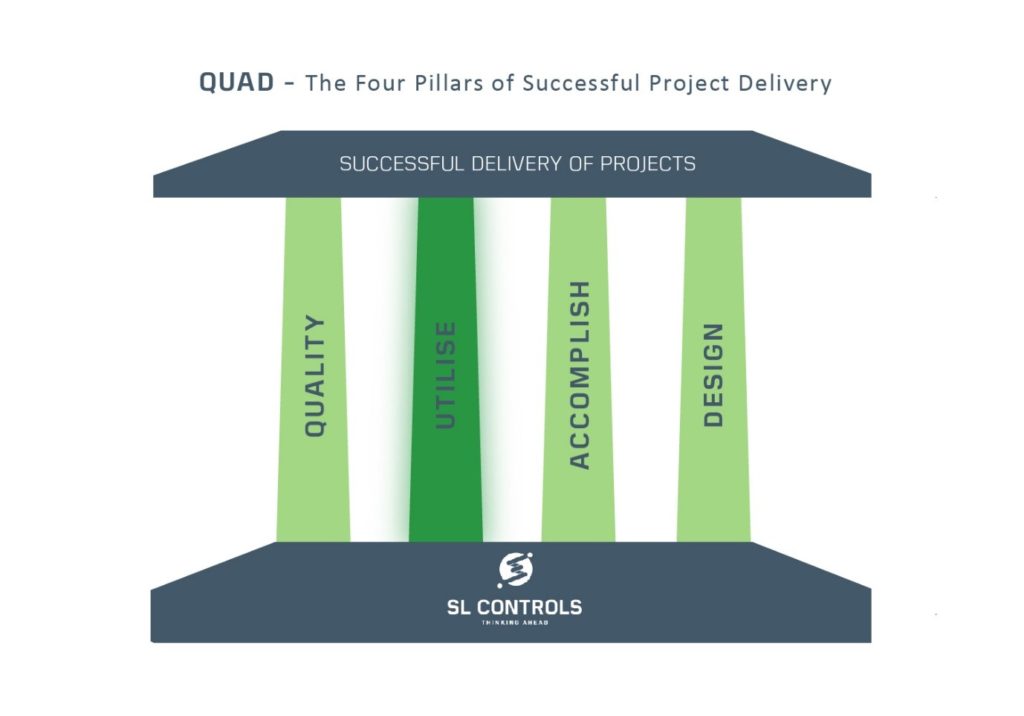SL Controls uses an approach it calls QUAD for the successful delivery of projects. This approach applies specifically in our field of controls and automation, but it can be applied to other software projects as well. QUAD stands for Quality, Utilise, Accomplish, and Design. Each of these elements is a pillar on which you should build a successful project.
In the previous blog in this series, we explored the Quality pillar. This blog will look at the Utilise pillar – Enabling a Successful Project.

The Utilise Pillar Explained
This part of delivering a successful project involves ensuring you have the right team in place. The team makes the delivery of the project possible which is why we call this pillar the enabler. In addition, getting the right resources and having them available at the right time is what makes the project successful.
There are four main elements to making this happen:
- Resource Acquisition
- Resource Retention
- Resource Upskilling
- Resource Allocation

Below we’ll explore best practices for each of these elements.
Resource Acquisition
The starting point is to acquire the right resources required for the project. This involves having a comprehensive HR strategy in the company and usually means having ongoing recruitment initiatives. After all, if you’re trying to recruit resources as a project is about to start, it’s probably too late. You need the team already in place which requires continuous recruitment drives.
This can take many forms: job boards, social media campaigns, recruitment agencies, and more. It’s also a good approach to have a strong connection with local colleges. At SL Controls, for example, we have a close relationship with the University of Limerick, the Limerick Institute of Technology, and other colleges close to our offices around the country. We regularly do presentations to students and employee graduates from these colleges.
The other crucial element you need in place to have a proper resource acquisition strategy is the package you offer. This includes salary as well as other benefits. When you structure this right, you can attract the best talent in the market. Using SL Controls as an example again, applicants often choose roles with us over multinationals because of the packages we offer.
Resource Retention
It’s as important to have a comprehensive resource retention strategy as it is to have an acquisition strategy. After all, it’s much more expensive to recruit and train someone new than it is to keep the people you have.
Again, this involves salary, but staff usually have varied reasons for wanting to work at particular companies. Getting the right work-life balance is often very high on the priority list.
There are varied strategies you can use to give employees a good work-life balance. One of the things we’ve done at SL Controls is to operate from regional offices. This means employees can live and work where the projects are rather than travelling long-distances. It also gives our team opportunities for career expansion without having to relocate.
We also have other initiatives such as Live Well at SL and Think Well at SL which promote physical and mental health and wellbeing. Plus, we offer defined career paths so staff know exactly what they need to do to progress their careers within the company.
Initiatives like these and others help improve staff retention rates.
The nature of the projects you offer employees is also important, i.e. ambitious engineers are more likely to stay with you if they get the opportunity to work on varied projects. At SL Controls, for example, we are vendor neutral. As a result, our engineers are constantly learning, extending their experience and staying at the top of the technology knowledge tree.
Resource Upskilling
For projects to be successful, you need to make sure your team has the necessary skills. This can be an ongoing process where you encourage people to pursue additional academic qualifications. It can also include identifying specific training courses that members of the team can complete to get the skills they need for the project.
Knowledge transfer initiatives are also important in engineering and programming teams. This solves the problem of one person having lots of knowledge of a particular area while other members of the team don’t. This situation pigeonholes the employee with the knowledge plus it creates difficulties if that person decides to leave.
With knowledge transfer initiatives, each person has a responsibility for passing on the knowledge they have to other members of the team. At SL Controls, we have a process for achieving this where the person with the knowledge prepares material for the rest of the team. This could be a presentation, training course, or article.
We find this delivers additional benefits – improving the soft skills of the team, i.e. doing a knowledge transfer presentation helps to improve presentation and training skills.
Resource Allocation
Finally, you need to use the right resources for specific tasks with the objective of getting the job done. This involves setting up the full team from the outset, scheduling the resources properly, and ensuring the resources are used effectively and efficiently. The latter involves spreading the load to avoid situations where an individual is solely responsible for a particular aspect of the project whether that is design, validation, technical, or anything else.
Benefits
Following this resource utilisation strategy brings several benefits to your project:
- Reduces lead times – as teams are already in place
- Reduces the costs associated with losing resources – as recruiting new talent is time-consuming and expensive
- Ensures there is no disruption to projects because of lost resources – because it takes time to replace a resource
- Resource continuity – clients can see the same resource on their projects
- Retains knowledge in the business – through the knowledge transfer initiatives
- Makes the project as efficient as possible from start to finish – ensuring it is delivered on-time and on-schedule
The Other Pillars of the QUAD Structure
We describe the QUAD structure using pillars because each element is equally important to the successful delivery of a project. In the next article, we will look at the Accomplish pillar.






Comments are closed.